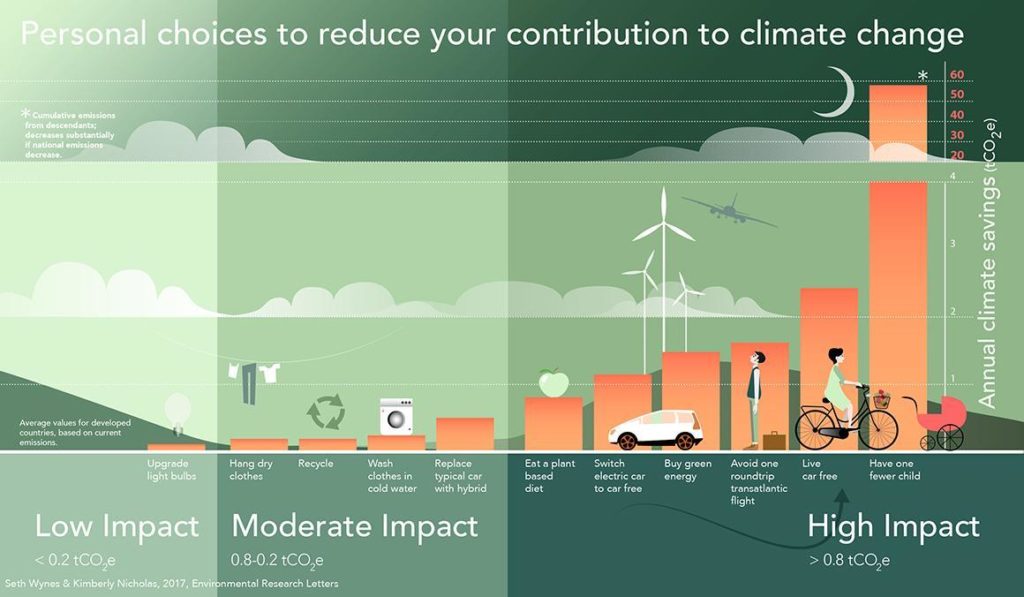Climate change is affecting the entire globe, causing extreme weather events such as flooding, extreme heat waves, heavy downpours, as well as rapidly changing climate conditions. To limit global warming to 1.5C and achieve carbon neutrality, as recommended by the Intergovernmental Panel on Climate Change (IPCC) and the 2015 Paris Agreement, it is essential to understand where carbon dioxide and other greenhouse gas emissions come from, so that actions to reduce emissions can be taken. So, what does carbon footprint mean and why is it relevant in this context?
—
What Is the Carbon Footprint?
A carbon footprint is defined as the total amount of greenhouse gases emitted into the atmosphere, such as carbon dioxide (CO2), methane (CH4), nitrous oxide (N2O), hydrofluorocarbons (HFCs), expressed in equivalent tons of CO2. It is associated with the activities of an individual, a community, an organisation, a process, a product or service, or an event, among other things. Individual carbon footprint can thus be termed as the total amount of greenhouse gases produced by our personal actions such as transportation, household activities, clothing and food. A product’s carbon footprint measures the total amount of greenhouse gas emissions from its life cycle – from raw material extraction and production to the final use by consumers including recycling or disposal. A company’s carbon footprint determines the greenhouse gas emissions from across its operations, including power generation used in building structures, industrial activities, and machinery and equipment. The carbon footprint of a country considers the greenhouse gas emissions from total energy and material utilisation, plants and other carbon sequestrations, as well as indirect and direct emissions from import and export processes.

How Can Carbon Footprint Help Us Combating Climate Change?
The carbon footprint is a valuable tool for measuring the contribution to climate change by an individual, organisations, products and services, and more. For example, by computing the industrial carbon footprint, an industry can better understand its major sources of emissions and find ways to minimise them.
Some of the biggest advantages of measuring a company’s carbon footprint:
- Assist you in understanding the key emissions sources in your organisation.
- It enables you to dive deep into your company’s activities and identify the most important challenges as well as opportunities.
- It facilitates stakeholder participation.
- It enables you to become more conscious of your consumption and contribute to making more responsible decisions.
- To be competitive in the marketplace, you must implement sustainable carbon-reduction strategies.
- Estimating a company’s carbon footprint can help to improve the reliability and veracity of the data used for Environmental, Social, and Governance (ESG) sustainability reporting.
You might also like: How to Lower Your Carbon Footprint Through An Eco-Friendly Home Audit
Consumers are also becoming more aware and conscious of the environmental effects of the products they purchase from the market. According to a 2020 YouGov survey of over 10,000 consumers worldwide, two-thirds (64%) of consumers endorse the concept of carbon labelling on products to show that products have been made with a commitment to measuring and reducing their carbon footprint.
At the individual level, to efficiently contribute to climate change mitigation, you do so by monitoring and measuring your individual carbon footprint. Some people produce much more carbon dioxide than others; the average carbon footprint for an individual in the United States is sixteen tons, which is one of the largest in the world. The average carbon footprint on a global scale is closer to four tons. To have the best chance of keeping global warming to 1.5 degrees Celsius, carbon footprints must be measured at multiple levels, including national, organisational, and individual.
How the Carbon Footprint Is Calculated
A carbon footprint is estimated by measuring not only CO2 emissions but also emissions of other greenhouse gases such as methane – which is 25 times more potent than carbon – and nitrous oxide. The effects of each of these gases are summed and represented as a single value in metric tons of carbon dioxide (MT CO2e). There are two commonly used methods of carbon footprint estimation, life cycle assessment and input-output analysis. Life cycle assessment takes into account all processes in the product’s life cycle, from production to disposal of the product. It involves summing up as many of the emissions pathways as possible. With this approach, there is a high possibility of missing out some pathways and since it is a manual process; it could take days to calculator per product and therefore not suitable for large scale use.
The second method known as input-output analysis involves using carbon intensities, which are measured in kilograms of CO2 per amount spent on the products, to assign a footprint to a product based on its price. Because the process is fully automated, it is much faster and can handle large amounts of data. The main limitation of this method is that it cannot manage product-specific data, such as low carbon sources.
Choosing which method to be used depends on whether you are dealing with small or large amounts of data. There are numerous calculators available online to assist you in estimating your personal carbon footprint. However, depending on the methodology used, the responses could vary significantly between websites. Although it is only an estimate, it will provide you with an idea as to how much you make a contribution to greenhouse gas emissions in the atmosphere. It could also give a better idea for making your lifestyle choices more eco-friendly.
What Can You Do to Reduce Your Carbon Footprint?
As we go about our everyday lives, we emit greenhouse gases into the atmosphere. By reducing our carbon footprint, we can reduce our greenhouse gas emissions. The choices we make every day in our homes, our travels, the food we eat, and what we buy and throw away can help ensure a stable climate for future generations. A vegetarian or vegan diet, for example, is more eco-friendly than a diet rich in meat. According to a new study published in the American Journal of Clinical Nutrition in February 2022, Americans who eat beef could reduce their carbon footprint by up to 48% by substituting non-beef meals with just one serving per day for a more environmentally friendly alternative. Other lifestyle changes include using a bicycle instead of a car to travel, or you could use renewable energy to power your car and electronic devices.
For companies, carbon footprint reduction is critical in terms of compliance and stakeholder engagement. If you want to be successful in business, you must adopt sustainable emission-reduction strategies. For the emissions that businesses are unable to cut or reduce, they can be offset – meaning companies can invest in eco-sustainable activities to the point that they capture the same amount of greenhouse gas emissions that the organisation or activities are accountable for. For instance, if company stakeholders can’t avoid flying or long-distance travels, one way to compensate for the emissions is to donate money to eco-sustainable projects. It is everyone’s responsibility, including individuals and the private sector, to make the world a cleaner and more environmentally sustainable place.
You might also like: 4 Steps to Reduce Your Carbon Footprint


















